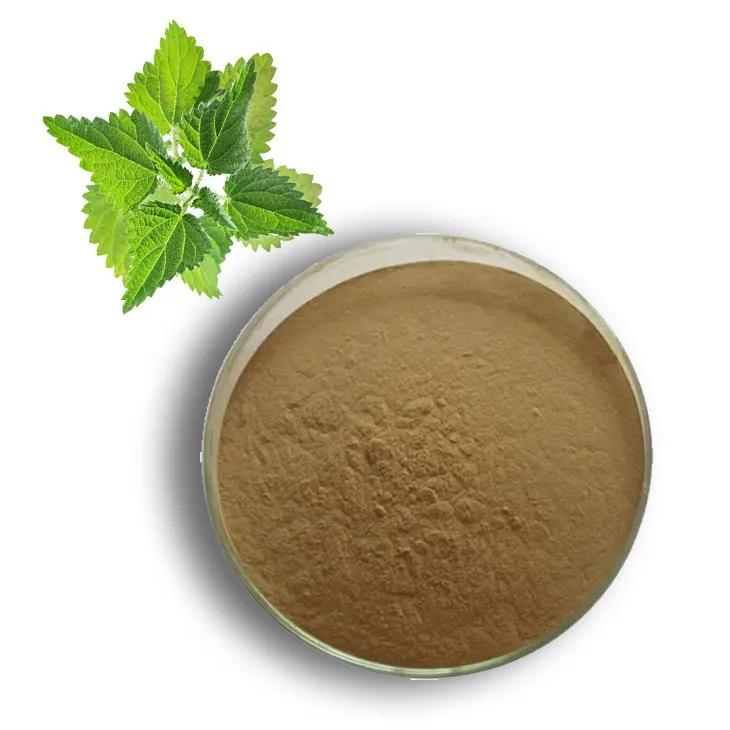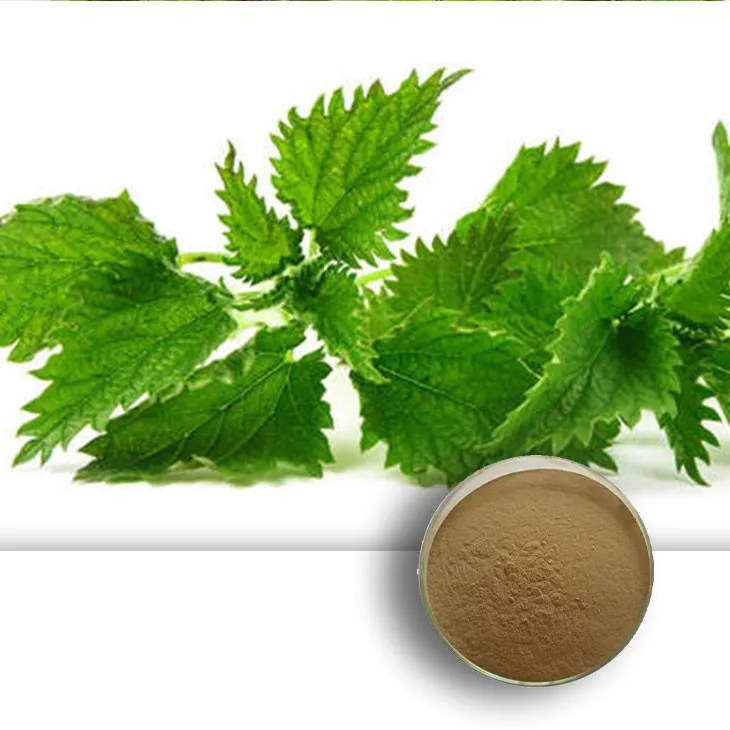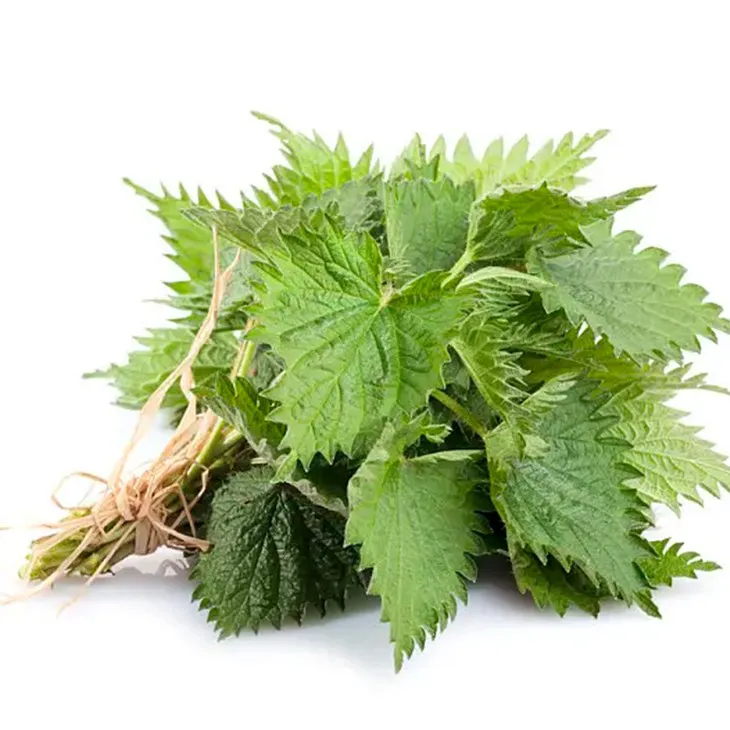- 0086-571-85302990
- sales@greenskybio.com
Organic supercritical CO2 extraction of nettle leaf extract.
2024-11-29

1. Introduction
In recent years, the demand for natural products has been on the rise, especially in industries such as pharmaceuticals, cosmetics, and food. Nettle leaves, which are abundant in nature, have caught the attention of researchers due to their rich content of bioactive compounds. Organic supercritical CO2 extraction has emerged as a promising method for obtaining Nettle leaf extract. Supercritical CO2 is a state of carbon dioxide where it has properties between a gas and a liquid. It has several advantages that make it an excellent choice for extraction. For instance, its low toxicity is crucial when the extract is intended for use in products that come into contact with the human body, such as pharmaceuticals and cosmetics. Additionally, its non - flammability provides a safer working environment during the extraction process compared to other solvents. Moreover, it can be easily removed from the extract, leaving behind a pure and high - quality product.

2. Nettle Leaves: A Rich Source of Bioactive Compounds
Nettle leaves are known to be a treasure trove of various bioactive substances.
2.1 Flavonoids
Flavonoids are a class of polyphenolic compounds that are widely distributed in plants, including nettle leaves. They play important roles in plants, such as protecting against UV radiation and pathogens. In the context of human health, flavonoids have been associated with numerous beneficial effects. For example, they possess antioxidant properties, which can help in neutralizing free radicals in the body. Free radicals are unstable molecules that can cause damage to cells and are implicated in various diseases, including cancer and heart disease. The flavonoids in Nettle leaf extract obtained through supercritical CO2 extraction can potentially be used in the development of nutraceuticals or dietary supplements aimed at promoting health.
2.2 Phenolic Acids
Phenolic acids are another group of bioactive compounds present in nettle leaves. These compounds also contribute to the antioxidant activity of the plant. They can scavenge free radicals and have anti - inflammatory properties. In the food industry, phenolic acids can be used as natural preservatives due to their ability to inhibit the growth of spoilage microorganisms. In cosmetics, they may be incorporated into products for their skin - protecting and anti - aging effects. The supercritical CO2 extraction method can effectively isolate phenolic acids from nettle leaves, ensuring their purity and potency.
2.3 Proteins
Nettle leaves contain proteins, which are essential for various biological functions. These proteins can have potential applications in the food and pharmaceutical industries. For example, in the food industry, they can be used as a source of plant - based protein for vegetarians and vegans. In the pharmaceutical industry, certain proteins from nettle leaves may have medicinal properties, such as anti - allergic or anti - histaminic effects. The supercritical CO2 extraction can isolate these proteins without denaturing them, which is a significant advantage over some traditional extraction methods.

3. The Supercritical CO2 Extraction Process
The supercritical CO2 extraction of Nettle leaf extract is a complex but highly efficient process.
3.1 Preparation of Nettle Leaves
Firstly, the nettle leaves need to be carefully collected and prepared. They should be clean and free from any contaminants such as dirt, pesticides, or other foreign materials. This may involve washing the leaves thoroughly and drying them to an appropriate moisture level. The quality of the starting material is crucial as it can directly affect the quality of the final extract.
3.2 Extraction Parameters
There are several important parameters in the supercritical CO2 extraction process. The pressure and temperature are key factors that determine the solubility of the bioactive compounds in the CO2. For example, by adjusting the pressure and temperature within the supercritical region, different components of the nettle leaf can be selectively extracted. Generally, a higher pressure and an appropriate temperature can increase the solubility of the target compounds in CO2. The flow rate of CO2 also affects the extraction efficiency. A proper flow rate ensures that the CO2 can effectively contact the nettle leaf material and dissolve the bioactive compounds.
3.3 Separation and Collection
After the extraction, the supercritical CO2 containing the dissolved bioactive compounds needs to be separated from the extract. This is typically achieved by reducing the pressure, which causes the CO2 to return to its gaseous state, leaving behind the concentrated nettle leaf extract. The collected extract can then be further processed, such as through filtration or purification steps, to obtain a final product with the desired quality and purity.

4. Advantages of Supercritical CO2 Extraction over Traditional Methods
When compared to traditional extraction methods, supercritical CO2 extraction offers several distinct advantages.
- Solvent - free or minimal solvent residue: Unlike some traditional extraction methods that use organic solvents such as hexane or ethanol, supercritical CO2 extraction leaves little or no solvent residue in the final product. This is especially important in industries where purity is of utmost importance, such as the pharmaceutical industry.
- Selective extraction: It allows for the selective extraction of specific bioactive compounds. By adjusting the extraction parameters, it is possible to target and isolate certain valuable components from nettle leaves, while leaving behind unwanted substances. This is not always easily achievable with traditional extraction methods.
- Environmentally friendly: CO2 is a natural gas, and its use in supercritical extraction is relatively more environmentally friendly compared to the use of some toxic and volatile organic solvents in traditional methods. It also reduces the risk of solvent emissions and associated environmental pollution.
- Product quality: The extracts obtained through supercritical CO2 extraction are generally of high quality, with better preservation of the bioactive compounds' structure and activity. This is due to the mild extraction conditions that do not cause significant degradation of the compounds.
5. Applications of Nettle Leaf Extract in Different Industries
The nettle leaf extract obtained through supercritical CO2 extraction has a wide range of applications in various industries.
5.1 Pharmaceutical Industry
In the pharmaceutical industry, nettle leaf extract can be used for its medicinal properties. For example, its anti - inflammatory and antioxidant properties can be exploited in the development of drugs for treating various inflammatory diseases and oxidative stress - related disorders. Additionally, the proteins in the extract may have potential applications in allergy treatment. The high - quality and pure extract obtained through supercritical CO2 extraction are more suitable for pharmaceutical formulations, as they can ensure the safety and efficacy of the drugs.
5.2 Cosmetics Industry
The cosmetics industry is another area where nettle leaf extract has great potential. The antioxidant and anti - aging properties of the flavonoids and phenolic acids in the extract can be used in the formulation of skin - care products. For example, it can be incorporated into creams, lotions, and serums to protect the skin from free radical damage and premature aging. The anti - inflammatory properties can also be beneficial for treating skin irritations and inflammations.
5.3 Food Industry
In the food industry, nettle leaf extract can be used as a natural food additive. The antioxidant properties can help in extending the shelf - life of food products by preventing lipid oxidation. It can also be used as a flavor enhancer or a natural colorant. Moreover, the protein content in the extract can be a valuable addition to food products as a source of plant - based protein.
6. Challenges and Future Directions
Although supercritical CO2 extraction of nettle leaf extract has many advantages, there are also some challenges that need to be addressed.
- High cost: The equipment required for supercritical CO2 extraction is relatively expensive, which can limit its widespread use, especially for small - scale producers. Research is needed to develop more cost - effective extraction systems.
- Optimization of extraction parameters: While the general principles of extraction parameters are known, further research is required to optimize these parameters for different bioactive compounds in nettle leaves. This will help in maximizing the yield and quality of the extract.
- Scale - up: Scaling up the supercritical CO2 extraction process from the laboratory to an industrial scale can be challenging. Issues such as maintaining uniform extraction conditions and ensuring product consistency need to be overcome.
In the future, with further research and development, it is expected that the supercritical CO2 extraction of nettle leaf extract will become more efficient, cost - effective, and widely used. New applications may also be discovered, further expanding the potential of nettle leaf extract in various industries.
FAQ:
What are the advantages of using supercritical CO2 for nettle leaf extract extraction?
Supercritical CO2 has several advantages for nettle leaf extract extraction. It has low toxicity, is non - flammable, and can be easily removed from the extract. These properties make it an ideal medium for obtaining high - quality nettle leaf extract.
What bioactive compounds can be found in nettle leaves?
Nettle leaves are rich in various bioactive compounds such as flavonoids, phenolic acids, and proteins.
Why is the supercritical CO2 extraction method good for isolating bioactive compounds from nettle leaves?
The supercritical CO2 extraction method can precisely isolate valuable components in nettle leaves without causing significant degradation. This is because supercritical CO2 has unique properties that allow it to selectively extract the desired compounds while leaving behind unwanted substances.
In which industries can the nettle leaf extract obtained by supercritical CO2 extraction be used?
The nettle leaf extract obtained by supercritical CO2 extraction has great potential in various industries, including pharmaceuticals, cosmetics, and food industries. Its ability to produce pure and concentrated extracts makes it suitable for use in these industries.
How does supercritical CO2 extraction compare to other extraction methods for nettle leaf extract?
Compared to other extraction methods, supercritical CO2 extraction offers several advantages for nettle leaf extract. It is a more environmentally friendly method as CO2 is non - toxic and non - flammable. It also produces a higher quality extract with better preservation of bioactive compounds. Additionally, the extraction process is more selective, resulting in a purer extract.
Related literature
- Supercritical Fluid Extraction of Bioactive Compounds from Nettle Leaves: A Review"
- "Organic Supercritical CO2 Extraction of Natural Products: Focus on Nettle Leaf Extract"
- "Advances in Supercritical CO2 Extraction of Bioactive Components from Medicinal Plants: The Case of Nettle"
- ▶ Hesperidin
- ▶ citrus bioflavonoids
- ▶ plant extract
- ▶ lycopene
- ▶ Diosmin
- ▶ Grape seed extract
- ▶ Sea buckthorn Juice Powder
- ▶ Beetroot powder
- ▶ Hops Extract
- ▶ Artichoke Extract
- ▶ Reishi mushroom extract
- ▶ Astaxanthin
- ▶ Green Tea Extract
- ▶ Curcumin Extract
- ▶ Horse Chestnut Extract
- ▶ Other Problems
- ▶ Boswellia Serrata Extract
- ▶ Resveratrol Extract
- ▶ Marigold Extract
- ▶ Grape Leaf Extract
- ▶ blog3
- ▶ blog4
-
Nature's Bounty Okra Extract.
2024-11-29
-
Chinese Oyster Peptide Powder Factories.
2024-11-29
-
The best organic L - carnitine.
2024-11-29
-
Certified organic acerola cherry extract.
2024-11-29
-
Wholesale β - carotene suppliers.
2024-11-29
-
Chinese lemon balm extract factories.
2024-11-29
-
100% Pure Organic Bitter Melon Extract.
2024-11-29
-
Tongkat Ali Extract
2024-11-29
-
Centella Asiatica Extract
2024-11-29
-
Uridine-5'-monophosphate Disodium salt
2024-11-29
-
Mango flavored powder
2024-11-29
-
Bamboo Leaf extract
2024-11-29
-
Chia Seed Powder
2024-11-29
-
Polygonum multiflorum extract
2024-11-29
-
Kelp Extract Powder
2024-11-29
-
Tamarind extract powder
2024-11-29
-
Peppermint Oil
2024-11-29





















